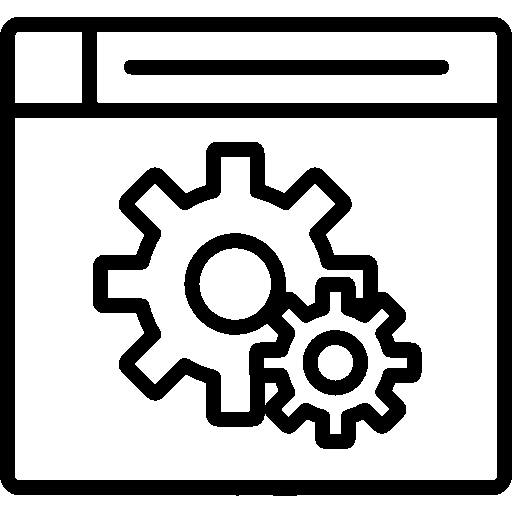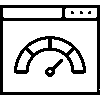- Products
- Platform
- Solutions
- Customers
- Support
- Pricing
 Website & Mobile & E-commerce
Website & Mobile & E-commerce
 CRM
CRM
 Operation & ERP
Operation & ERP
 Productivity
Productivity
 Support
Support
 Community
Community
 Learn
Learn
Application Support Point

Make it easier to manage your expenses by determining your payments.
- Version History
- Application Features
- User Manual
- FAQ
- Community
Debt Record Management
Users can easily create debt records by selecting customers or staff, determine payment dates and assign categories.
You can make changes to existing debt records, add late payments, or update payment statuses.
Deleted debt records are stored in the Deleted Debts with Term and Deleted Debts without Term screens and can be retrieved when necessary.
Payment and Term Management
You can record your debts as Term or Non-Term and track their payment processes on specified dates.
You can set a late payment compensation rate for unpaid debts and have it automatically added to the debt amount.
You can pay your debts partially or fully and track your payment transactions.
Personal Settings and Filtering
You can determine a structure that suits your working style by displaying debts as Tabs or Popups.
You can access your debts faster by filtering them according to criteria such as Date Range, Branch, Transaction Code, Category.
General Configuration and Settings
Users can customize the color of the app.
You can add predefined categories or edit existing categories for better classification of debts.
You can maintain detailed financial control by managing debts of different branches separately.
You can track and view authorized users who can access the application.
Definition
Debts application is a software that helps people or businesses manage their debts and receivables. Such applications are designed to help users better track their financial situation, pay their debts on time, and make financial planning more effectively.
Aim
The purpose of the Debts app is to enable users to manage their debts effectively.
Key Benefits
- Users can easily see the current status of their debts and thus constantly monitor their financial situation.
- Because debts and payments are recorded in an orderly manner, users can organize payment plans and plan their future financial obligations.
- Users can receive detailed reports on their debt situation and find ways to improve their financial situation by analyzing this data.
- It allows users to save time and energy by automating manual record keeping and calculation processes.
- It ensures that financial data is stored securely and can only be accessed by authorized individuals.
Debts Application Login Screen
This is the login screen of the Debts application.

Debts Screen
Debts are divided into five categories: Term Debts, Non-Term Debts, Overdue Debts, Deleted Term Debts, Deleted Non-Term Debts.
Term Loans
This is the screen where term debts are displayed. Records with the date information for the debt payment are listed.

In the Term Payables screen, Order, Transaction Code, Document Code, Customer, Subject/Category, Record Date, Update Date, Accrual Date, Maturity Date, Price, Delay Compensation, Total amount information is listed in a table.
Non-term Debts
This is the screen where non-term debts are displayed. Records for which no payment date has been entered are listed.

On the Demand Payables screen, the Order, Transaction Code, Document Code, Customer, Subject/Category, Status Record Date, Update Date, Accrual Date, Maturity Date, Price, Delay Compensation, Total amount information is listed in a table.
Overdue Debts
This is the screen where overdue debts are displayed. Records with a payment date entered but past due are listed.

On the Overdue Debts screen, Order, Transaction Code, Document Code, Customer, Subject/Category, Record Date, Update Date, Accrual Date, Maturity Date, Price, Delay Compensation, Total amount information is listed in a table.
Deleted Term Debts
This is the screen where deleted term debts are displayed. Deleted debt records with a payment date specified are listed.

In the Deleted Term Debts screen, the Order, Transaction Code, Document Code, Customer, Subject/Category, Status, Record Date, Delete Date, Price Delay Compensation, Total amount information is listed in a table.
Deleted Debts
This is the screen where deleted non-term debts are displayed. Deleted debt records with no due date entered are listed.

On the Deleted Debts screen, the Order, Transaction Code, Document Code, Customer, Subject/Category, Status, Record Date, Delete Date, Price Delay Compensation, Total amount information is listed in a table.
Customers' Payables Screen
Customers are divided into two groups: Term Payables and Non-Term Payables.
In the filtering section, the list can be narrowed down according to company, person and personnel breakdown.
Term Loans

On the Term Payables screen, the Order, Customer Information, Status, Paid, Unpaid information is displayed in a table.
Non-term Debts

On the Non-Term Payables screen, the Order, Customer Information, Status, Paid, Unpaid information is displayed in a table.
Log Records
Records of transactions made in debt records are listed.

On the Log Records screen, User Name, Record Information, Description, Transaction Status, Date information is displayed in a table.
Configuring Personal Settings
Kişisel Ayarlar, kullanıcının bir uygulama üzerindeki deneyimini özelleştirmesine olanak tanır. Kullanıcının kendi tercihlerine göre çeşitli ayarları yapılandırabilmesini sağlar.

Listeleme Ayarları
Detay Gösterim Yöntemi; Sekme veya Popup seçilir. Borç kartı seçime göre açılır.
Varsayılan Takvim Filtresi; Günlük, Haftalık, Aylık, Senelik veya Tümü olarak seçilir. Borç listesinin seçilen takvim filtresine göre listelenmesini sağlar.
Varsayılan Tarih Filtresi; Kayıt Tarihi, Güncelleme Tarihi, Tahakkuk Tarihi, Vade Tarihi seçilir. Borç listesinin seçilen tarih filtresine göre listelenmesini sağlar.
Sayfalamada Kayıt Sayısı; 25, 50, 100, 250 veya 500 olarak seçilir.
Sütunlar
Borç liste sayfasında gösterilecek tablo başlıklarının seçimi yapılır.
Sıra
Hareket Kodu
Belge Kodu
Müşteri Bilgisi
Konu/Kategori
Durum
Kayıt Tarihi
Güncelleme Tarihi
Tahakkuk Tarihi
Silinme Tarihi
Vade Tarihi
Fiyat
Gecikme Tazminatı
Toplam
Yukarıda listelenen sütun maddeleri tercihe göre seçilerek kaydedilir.
Filtering
Filtreleme, uygulamada belirli kriterlere göre verileri listelemek için kullanılır. Kullanıcıya yalnızca ilgili veya uygun verileri sunmaya yardımcı olur.

Filtreleme ayarları ekranında Tarih Aralığı, Tahakkuk Edilmemiş Kayıtlar, Kategori, Durum, Aciliyet, Cari Aktarım Durumu, İcra Durumu alanları seçilerek filtreleme yapılır.
Sıralama; ID, Müşteri, Konu, Kategori, Tarih, Fiyat, Durum veya Aciliyet seçilerek sıralama yapılır.
Müşteriler ve Log kayıtları ekranında farklı filtreleme alanları mevcuttur.
-Müşteriler

Filtreleme ayarları ekranında Tarih Aralığı, Müşteri Tipi alanları seçilerek filtreleme yapılır.
-Log Kayıtları

Filtreleme ayarları ekranında Kullanıcı, Kayıt Başlığı, İlgili Kişi alanları seçilerek filtreleme yapılır.
Adding a New Debt Record
This is the screen where the debt record is defined.

Customer / Staff / Students are preferred to define the debt record. Branch, Transaction Code, Document Code, Subject, Urgency, Accrual Date, Amount, Related Product, Description information are entered. After all operations are completed, they are saved by pressing the Save button.
Summary Screen of Debt Information
This is the screen where summary information is displayed.

The summary screen includes Customer Information, Current Account, Related Product, Debt Information, Status, Explanation . From the Transactions menu, shortcut operations such as Mark as "Paid", Partial Payment, Transfer to Invoice, Copy Debt Record, Delete Record can be performed.
Debt Record Editing Screen
This is the screen where the debt record is edited.

On the Debt Record editing screen, Customer, Current Account, Branch, Transaction Code, Document Code, Category, Subject, Urgency, Accrual Date, Due Date, Related Product, Description information are edited. After all operations are completed, they are saved by pressing the Save button.
Log Records
Records of transactions made in the debit record are listed.

The log records screen displays User Name, Record Information, Description, Transaction Status, and Date information in a table format.
Configuring General Settings
Settings are customized by selecting the settings to be used according to the company's preference from the General Settings menu.

The color of the application is saved by selecting the preferred color.
If the company has more than one branch, the debt application can be defined separately according to the branches.
You can transfer money between accounts using the current account transfer feature.
Expenses are listed using the Expense Feature.
Income item selection can be made mandatory.
Related Product Available.
VAT Feature Available.
Delay Compensation Rate is determined as a Monthly % rate.
The default Maturity Accrual Date is set in days.
Add Debt Category
This is the screen where debt categories are displayed.

Order and Receivable information is displayed in tabular form on the Debt categories screen.
A category is added by pressing the Add New button.

To add a new category, Title, Relevant Current Transaction Category and Order information are entered. After all operations are completed, they are saved by pressing the Save button.
Add Payment Type
This is the screen where payment types are displayed.

Header information is included on the Payment Types screen.
The payment type is added by pressing the Add New button.

Header information is entered to add Payment Type. After all operations are completed, they are saved by pressing the Save button.
Authorized Users
Having certain authorities in the company is an important element that increases organizational efficiency and workflow. Delegation ensures a clear distribution of tasks and responsibilities.

On the Authorized Users screen, users are registered by giving them the necessary authorizations.
-
How do I add a debit entry?
Click on the "Add New" button in the application. A new debt can be added from the "Add Debt Record" screen that opens. After entering the accrual date, maturity information, amount and other basic information, your debt record is created.
-
How do I edit an existing personnel record?
To edit a debt record, select the relevant personnel information and click the "Edit" button. You can edit the necessary fields on the "Debt Record Edit" screen that opens.
-
How are category and subject determined in debt recording?
Category selection is made from the categories defined in the Settings >> Debt Categories area. Subject information is entered manually and is used to describe the content of the debt.
-
What is the difference between a term and a non-term loan?
While the payment date is determined for term debts, no specific payment date is defined for non-term debts. While term debts are listed according to the determined due date, non-term debts are considered to be payable immediately.
-
How can I track whether my debt has been paid?
There is a Payment Status column for each record on the Payables screen. It is possible to mark the debt as paid or unpaid. In addition, payment date and payment type information can be displayed.
-
How can I view overdue debts?
Debts that are due but not paid are listed on the Overdue Debts screen. Here you can see details such as debt date, customer information, late payment compensation, and total debt amount.
-
Can I make a partial payment?
Yes, you can pay a certain portion of the debt by using the Partial Payment option from the Transactions screen.
-
Can I transfer payments to invoice?
Yes, you can process your debt record as an invoice with the Transfer to Invoice option. In this way, you can work in an integrated manner with your financial processes.
-
Can I change how debts are listed?
Yes, you can display debt records as Tab or Popup. This setting can be changed in Personal Settings > Detail Display Method.
-
How do I set the default calendar filter?
You can filter your payments to show daily, weekly, monthly, yearly or all debts from the Personal Settings >> Default Calendar Filter section.
-
Can I filter debt records based on certain criteria?
Yes, you can sort debt records by criteria such as Date Range, Branch, Debt Categories, Transaction Code, Document Code in the Filtering section.
-
How do I sort my debt lists?
Sorting options include Record Date, Update Date, Accrual Date and Maturity Date. You can sort according to your needs.
-
How can I change the color of the app?
You can choose your preferred color by going to the "Set App Color" section in Settings >> General Settings or enter the color code manually.
-
Can I manage debt records separately for different branches?
Yes, you can manage debts separately on a branch basis by activating the Separate Debts by Branch option.
-
Can I add an expense item to the payables records?
Yes, you can match debt records with expense items by activating the Use Expense Feature option.
-
Can I include the VAT calculation in the debit entries?
Yes, you can specify the VAT rate in debt records by activating the Use VAT Feature option.
-
How do I manage debt categories?
You can edit existing categories or add new categories by going to Settings >> Debt Categories.
Questions
Ask questions and get answers from other Entranet users.

















